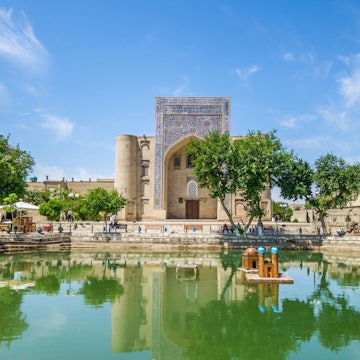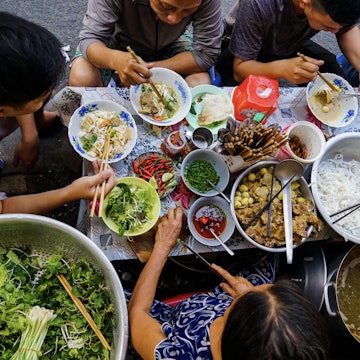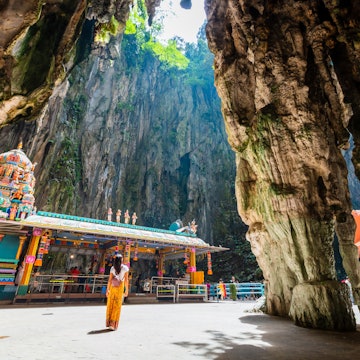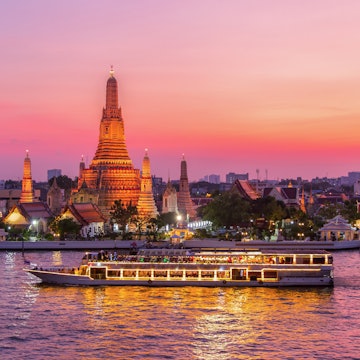

Tipping across Asia is not as complicated as it seems. Darien Robertson for Lonely Planet
Tipping is an elusive custom all over the world, and Asia is no exception. A common mistake tourists make is tipping in the first place. It's not customary to tip in many Asian countries, and in some instances, it's even considered rude.
Don't stress – it's not as complex as it seems. Just follow this guide to tipping across Asia.

Restaurants and bars
China, Myanmar, Singapore and Taiwan do not have a strong tipping culture, so leaving extra money at the end of the meal or in a bar is largely deemed unnecessary. However, influenced by the influx of overseas tourists into larger cities, some chic new restaurants in China are starting to accept small tips when offered.
Hospitality workers in much of Southeast Asia, including Cambodia, Thailand, Vietnam, Indonesia and Malaysia, are becoming more and more accustomed to receiving tips, though tipping culture in non-touristy areas is not customary, other than perhaps rounding up the bill. For tourist spots, it's very much formed by international visitors. Because of Southeast Asia's proximity to Australia and China (non-tipping cultures), locals know not to expect tips from these groups of visitors, though Americans and Europeans tend to tip, so it's very hit or miss.
In India, tipping is customary. Aim to tip 10-15% at bars, cafes and restaurants regardless of whether a service charge is included (since this doesn't always benefit servers), especially in smaller establishments.
In the Maldives and Bhutan, tipping is not customary but appreciated. For both countries, aim for a 10-15% tip, but note that a 10% service charge applies in both regions when you dine out, and in that case, an additional tip is not expected.
In most of Central Asia, tipping is not expected unless you're staying or dining in ritzier places (where it is sometimes customary to add 5% to the 10% service charge).
Other Asian countries, including Japan and Nepal, believe that tipping is only for exceptionally good service – being treated with hospitality and warmth is the norm and shouldn't be "rewarded." In Japan, some servers might even politely refuse a tip if you leave one.
Hotel staff
China's no-tipping culture prevails when it comes to hotels, but if you're living the high life in a particularly luxurious establishment, feel free to tip the porter around 5 yuan per bag. You may also find that in high-end hotels, a 10% service charge will be added to the overall bill. Japanese hotels also do not expect their staff to be tipped, particularly in a traditional ryokan (inn). If you feel particularly inclined, leave around 5000 yen (for a short stay) in an envelope, but it may be politely refused if you hand it over in person.
India's hotel staff are notoriously poorly paid, so tipping the porter at least ₹100 per bag and the housekeeping staff ₹250-300 per night (₹500 in five-star hotels) are particularly welcome gestures.
Throughout most of Southeast Asia, including Thailand, Cambodia, Indonesia, the Philippines, Singapore, Vietnam and Malaysia, a service charge will almost always be included in your overall bill upon checkout, so tips are not expected. However, it isn't uncommon to tip porters the local currency equivalent of US$1-2 per bag. Tipping housekeeping staff in larger hotels is more common than in smaller establishments.

Tour guides
As you can probably guess by now, tour guides and drivers in China do not expect tips. South Korean and Taiwanese tour guides do expect to take home a little extra on organized excursions – around 10% of the tour cost is fine to split between the guide and driver. In Japan, tip tour guides around 2500 to 5000 yen for a full day, handed over in an envelope. If you're using a private driver, it's a nice gesture to offer to buy them lunch.
A general rule of thumb in India is to tip ₹500 per day for guides and ₹500-₹600 per day for drivers (up to ₹800- ₹1000 for more than two passengers).
In Singapore and the Philippines, tipping tour guides and drivers a combined 10% of the overall tour cost is fair – they should split it between themselves. In other Southeast Asian countries like Thailand, Vietnam, Malaysia, Cambodia and Indonesia, tipping around US$10 to $20 (on the higher end for couples or families) for a tour guide per day, and half of that amount for the driver is appreciated. It's customary to give the total tipping amount to the guide, who will then siphon off some for the driver. If on a trek, tipping porters $10 to $20 per day is customary.

Taxi drivers
Taxi drivers in China or South Korea do not expect tips, but rounding up the fare is standard practice in Japan. Indian taxi and rickshaw drivers are not accustomed to tips (however much they will insist otherwise), but telling them to keep the change is a genial gesture. In Central Asia, visitors are encouraged to tip drivers US$10-15.
In Singapore, the local currency equivalent of US$1 is a good tip for taxi and tuk tuk drivers, while in Indonesia, the Philippines and Malaysia, a 10% tip for fixed-fare rides is standard. In Vietnam, Thailand and Cambodia, tipping taxi drivers is not required. However, it's appreciated when passengers simply round up the fare or offer the driver to keep the change.
Mosques and temples
There isn't a hard-and-fast rule here, though there's usually a donation box available. Robes and scarves for women are usually free of charge, and no tip is expected for the person handing them out.
Thai massages
If you grab a quick massage on the Khao San Road or similar, don't feel obliged to tip more than 30 baht. If you indulge in a more upmarket massage, your tip should be around the 150 to 300 baht mark. Resorts and retreats that include multiple treatments will usually state the tipping policy upfront.
In certain industries (like spas) in Southeast Asia, workers typically get a fraction of the cost of the treatment from the shop, so tips are appreciated. In Vietnam, returning patrons often tip 50-75% of the treatment, especially if requesting a specific therapist. In more touristed areas, there is sometimes signage that tipping is included. Otherwise, 10-20% is customary, especially in posh hotel spas.
Baksheesh
When traveling in the Middle East and South Asia, you will often be asked for "baksheesh." The term usually applies to a simple gratuity or service charge but can refer to all kinds of financial tokens of appreciation. If someone asks you for baksheesh without providing a service, this is considered begging, so giving money is completely at your discretion, although not usually advisable. Baksheesh can be politely asked for by those who have provided a service, but it can be refused at any time, and – like almost all tipping customs – it is not mandatory, whatever you may be led to believe.













